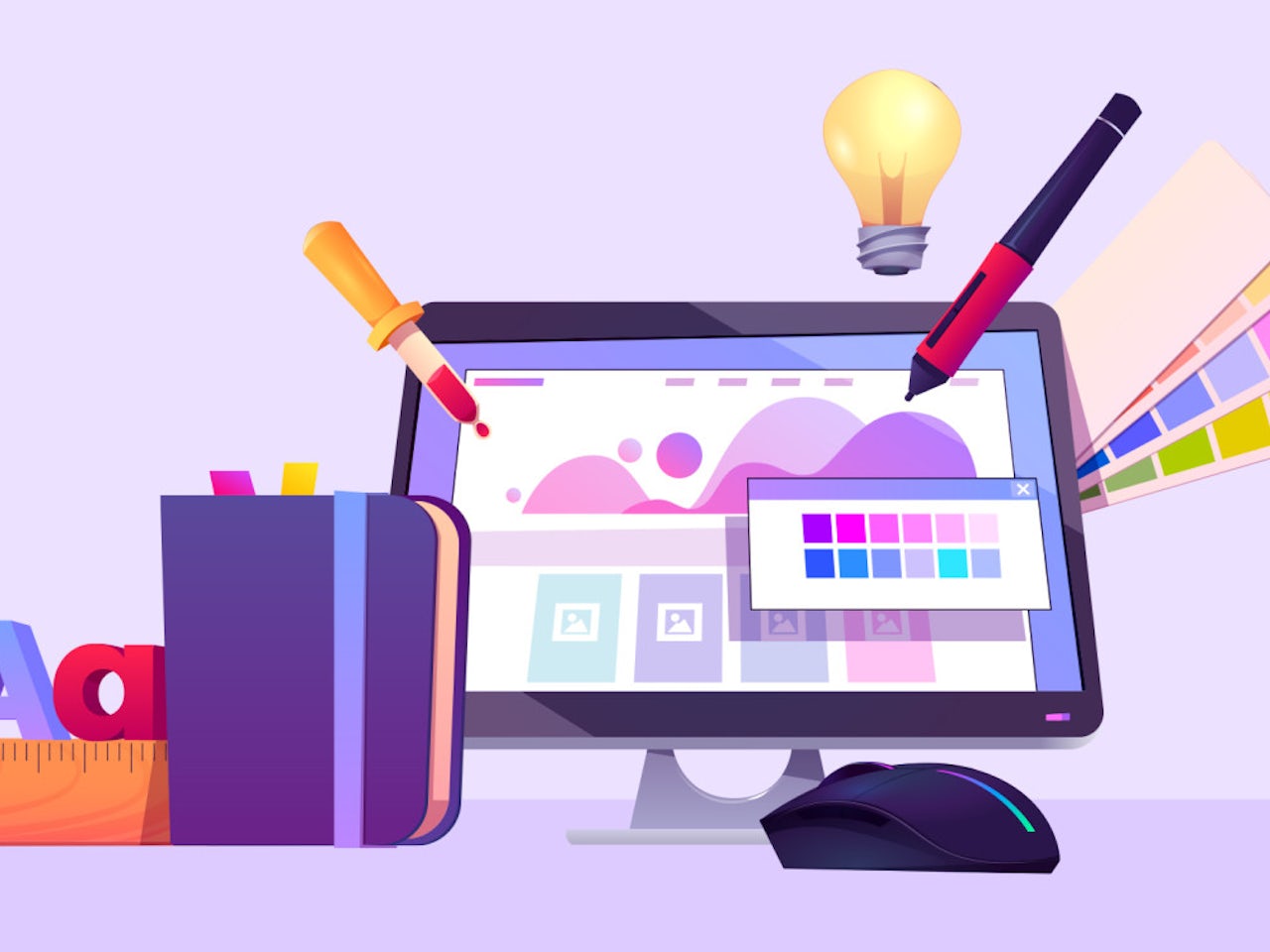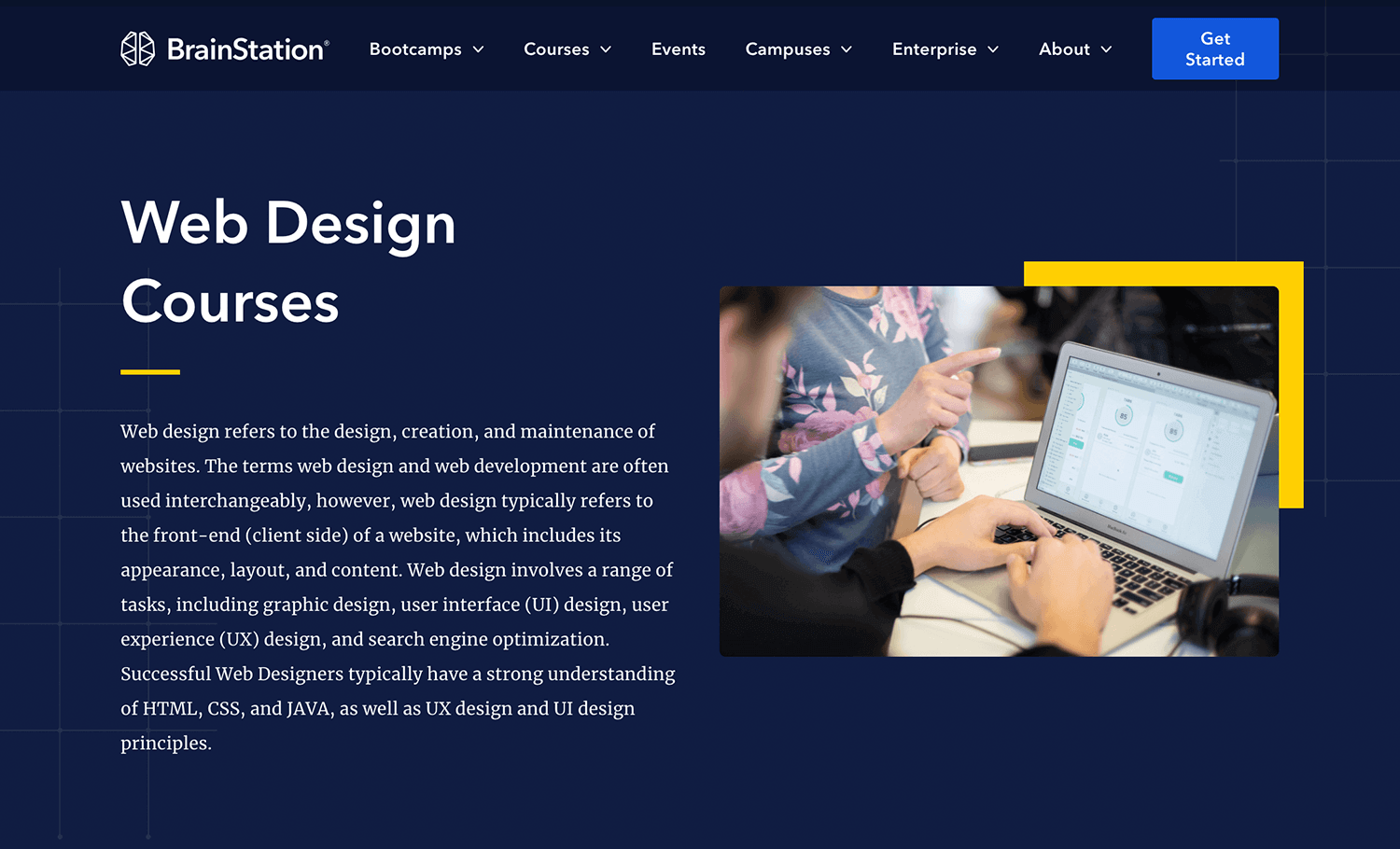Website Design London Ontario Designed Around Visitor Engagement
Website Design London Ontario Designed Around Visitor Engagement
Blog Article
Just How to Effectively Integrate Visual Appeals and Performance in Website Design
When creating an internet site, you need to strike a balance between appearances and functionality. It's not nearly looking good; your style needs to also serve an objective and overview users properly. By concentrating on simplicity and instinctive navigation, you can develop an interesting experience. But what elements genuinely boost functionality while maintaining visual appeal? Let's check out the vital principles that can lead to an unified blend of elegance and feature.
Recognizing the Significance of Looks and Performance
When you create an internet site, recognizing the equilibrium in between looks and performance is necessary for producing an efficient individual experience. An aesthetically appealing site grabs focus, but it's the performance that maintains customers engaged. If your website looks great but is challenging to browse, site visitors will quickly weary and leave.Consider your target audience and what draws them in. You wish to create a style that reflects your brand name while guaranteeing ease of use. Structured layouts, instinctive navigation, and clear calls to activity can enhance both appearances and performance.

Principles of Effective Internet Design
To develop an efficient website design, you require to abide by several vital principles that enhance both customer experience and visual appeal. Prioritize simpleness; a clean design helps individuals browse easily. Make use of a constant color design and typography to keep coherence throughout your site. This promotes familiarity and trust.Next, guarantee your layout is receptive. Individuals access web sites on numerous devices, so your style ought to adjust perfectly. Take note of visual pecking order; emphasize important aspects with placement, size, or shade to lead users' focus.Finally, include ample white space. It avoids clutter and makes content more absorbable. Remember, efficient internet design balances looks and functionality, so every style selection should serve an objective. By following these principles, you'll develop a site that's not only aesthetically enticing but also easy to use, inevitably maintaining site visitors involved and urging them to return.
Prioritizing Individual Experience
When prioritizing individual experience, you'll desire to begin by recognizing what your customers absolutely need. Streamlining navigating design can make a substantial distinction in just how easily they find what they're seeking. Improving aesthetic hierarchy aids assist their interest to the most important aspects on your website.
Recognizing Customer Requirements
Recognizing individual needs is essential for developing an appealing web experience that maintains site visitors coming back. To achieve this, you have to determine the goals and preferences of your target audience. Start by conducting customer study, like studies or interviews, to gather understandings on what users worth most. When connecting with comparable websites, pay interest to their pain factors and difficulties. This information permits you to tailor your layout, ensuring functionality straightens with individual expectations. In addition, consider creating customer identities that stand for different sections of your audience, assisting you picture their needs throughout the layout procedure. When you prioritize recognizing customer requirements, you create a website that not only looks excellent yet also provides a smooth, enjoyable experience that promotes commitment.
Streamlining Navigation Design

Enhancing Aesthetic Hierarchy
A strong visual pecking order is vital in leading users with your website and ensuring they engage with vital content. To achieve this, utilize color, spacing, and size purposefully. Make vital elements like headings larger and bolder than body text, drawing interest right away. Make use of contrasting colors to highlight phone call to activity, motivating clicks. Additionally, use enough white area to separate areas, making content absorbable and inviting.Consider the circulation of information; prepare aspects realistically, leading users' eyes from one factor to the following. Usage aesthetic hints, like lines or arrows, to direct focus. By prioritizing visual power structure, you enhance customer experience and enhance the chance of conversions, ensuring your website is both visually pleasing and functionally effective.
Shade Theory and Its Influence On Usability
While picking the best shades for your site might seem like a small detail, it considerably influences use and individual experience. Shade impacts just how users regard details and can impede or improve navigation. As an example, contrasting shades can assist essential aspects attract attention, making it much easier for site visitors to discover what they need.Additionally, consider the psychology of colors: blue frequently motivates depend on, while red develops seriousness. Recognizing your target market can direct your shade choices, ensuring they reverberate well.Moreover, consistent shade systems help construct brand identity, making your internet site more remarkable. Be careful-- too lots of shades can bewilder users. Stay with a minimal scheme that complements your web content and keeps clarity.Incorporating accessibility is additionally essential; verify your shade mixes are pleasant for those with visual disabilities. By thoughtfully applying shade concept, you'll boost here use and develop a much more engaging user experience.
Typography: Harmonizing Design and Readability
Shade options set the stage for your website, but typography plays an equally important role in enhancing user experience. You want your text to connect plainly while also mirroring your brand name's character. Start by picking font styles that are not just eye-catching however also understandable. Sans-serif font styles typically work well for electronic screens, as they're easier to read at numerous sizes.Maintain a pecking order by utilizing different font style sizes and weights; this guides users via your material easily. Consider line spacing and letter spacing; as well tight can frustrate viewers, while also loosened can interfere with the circulation. Restriction your font choices to two or 3 to maintain the layout cohesive.Finally, always check your typography across various gadgets and web browsers. What looks great on one screen might not on an additional. Balancing design with readability assurances that your message resonates, keeping your target market involved and notified.
Receptive Layout: Making Aesthetic Appeals Deal With All Gadgets
To guarantee your site looks terrific on any kind of gadget, you'll require to welcome responsive layout principles. This strategy guarantees your website adapts to various display dimensions, offering an ideal user experience. Begin by utilizing liquid grids and adaptable images that scale perfectly. Rather than dealt with measurements, select portions and family member systems, permitting your format to readjust dynamically.Next, execute media inquiries in your CSS. These let you apply various designs based upon tool characteristics, like screen width. By doing this, you can preserve visual charm while ensuring functionality.Don' t ignore touch targets; make sure switches and web links are easy to touch on smaller screens. Prioritize vital material, so individuals can quickly browse your site regardless of their device. By focusing on these elements, you'll create an engaging, aesthetically appealing experience that fulfills the requirements of all individuals, whether they're on a desktop, tablet computer, or mobile phone.
Carrying Out Use Testing for Continual Renovation
To boost your website design, you need to set clear usability goals that line up with customer demands. By performing customer examinations, you can gather important comments on how real individuals connect with your website. Assessing these outcomes will aid you make notified enhancements and create an extra efficient customer experience.
Specifying Functionality Goals
While aesthetics can attract individuals in, defining usability objectives is vital for ensuring their experience remains enjoyable and seamless. Start by determining what you desire users to attain on your site (website design london Ontario). Consider their jobs, needs, and habits. Are they seeking information, making an acquisition, or enrolling in an e-newsletter? Establish clear standards to gauge success, like task conclusion rates or time on task. Focus on user-friendly navigating, accessible material, and receptive layout to enhance functionality. Routinely review these objectives as customer expectations develop. By defining functionality objectives, you develop a structure for assessing and enhancing your internet site's efficiency. This focus on usability not only increases customer complete satisfaction yet also reinforces the general efficiency of your layout
Performing Individual Examinations
Performing user tests is necessary for refining your site and guaranteeing it meets your audience's demands. Start by determining your target customers and producing an examination strategy that details your purposes. Use a mix of qualitative and quantitative techniques, such as surveys, interviews, and task-based observations, to gather extensive comments. Invite participants to navigate your website while you observe their interactions and note any type of problems they come across. Urge open discussion to catch their ideas and feelings regarding the style and performance. Keep sessions short and focused, ensuring you cover crucial locations without frustrating customers. Make certain to document all searchings for, as this info will be very useful for making enlightened style decisions that improve both visual appeals and usability.
Assessing Test Results
Just how can you efficiently analyze the outcomes of your usability examinations to drive continuous improvement? Begin by categorizing responses into usual themes. Search for patterns in user habits that highlight discomfort points or locations for enhancement. Use measurable data, like job completion rates and time on job, to measure functionality fairly. Don't neglect to consider qualitative understandings from user comments; they often expose underlying issues that numbers can not show. Focus on one of the most impactful findings and develop actionable things for your design team. Keep in mind, it's about iterating-- implement modifications, after that examination again. This cycle of screening, assessing, and refining assists you equilibrium appearances and capability, guaranteeing your web site meets individual needs effectively while maintaining aesthetic appeal.
Often Asked Inquiries
How Do I Pick the Right Color Scheme for My Site?
To pick the ideal color scheme for your site, consider your brand name's character, target market, and psychological impact (website design london Ontario). Use shade psychology, create harmony, and warranty readability. Test combinations to see what resonates best with visitors
What Devices Can Help With Website Design Visual Appeals and Performance?
You can make use of devices like Adobe XD, Figma, and Lay out to enhance your web design's visual appeals and performance. These platforms use user-friendly user interfaces, cooperation features, and pre-made design templates to simplify your imaginative procedure and enhance your styles.
How Can I Incorporate Animations Without Endangering Capability?
To include animations without compromising capability, focus on refined impacts that enhance customer experience. Usage CSS animations for smoother communications, assurance quick load times, and examination on different devices to maintain efficiency while adding visual allure.
What Are Usual Errors to Avoid in Website Design Looks?
When developing, avoid chaotic layouts, inadequate color choices, and irregular fonts. Do not ignore mobile responsiveness, as it can alienate customers. Confirm your style aligns with your brand name, creating a smooth experience that engages site visitors successfully.
How Usually Should I Update My Site's Layout for Ideal Aesthetics?
You must update your web site's design every 1-2 years to stay on par with trends and keep perfect aesthetics. Consistently restoring visuals helps involve warranties and visitors your website remains enticing and user-friendly. When you make a site, recognizing the balance in between looks and functionality is necessary for creating an efficient user experience. To produce an effective internet layout, you need to stick to several crucial principles that enhance both individual experience and aesthetic appeal. Users accessibility sites on numerous gadgets, so your layout ought to adjust effortlessly. When focusing on individual experience, you'll desire to start by recognizing what your users genuinely need. Begin by carrying out individual study, like interviews or surveys, to gather insights on what individuals value most.
Report this page